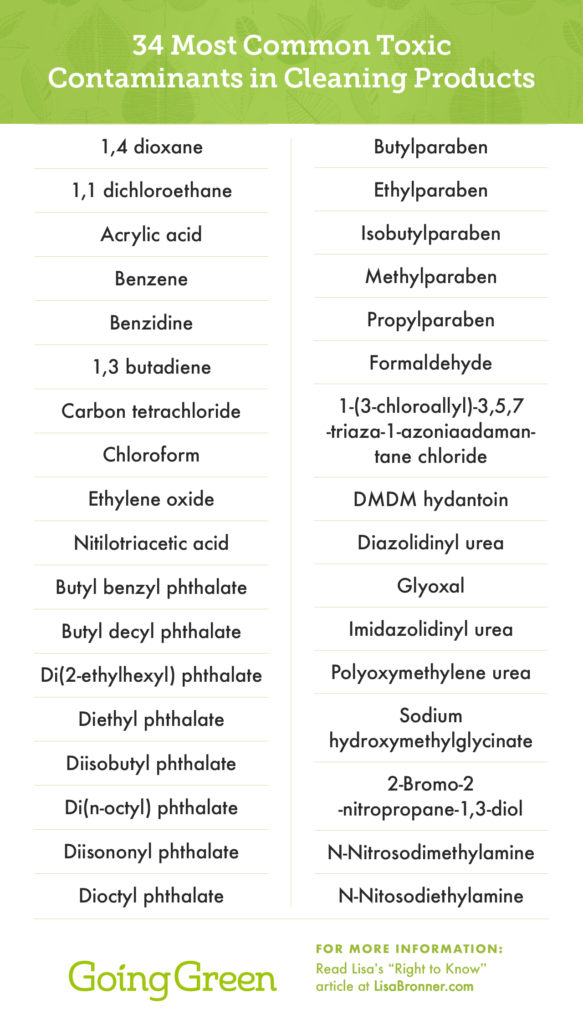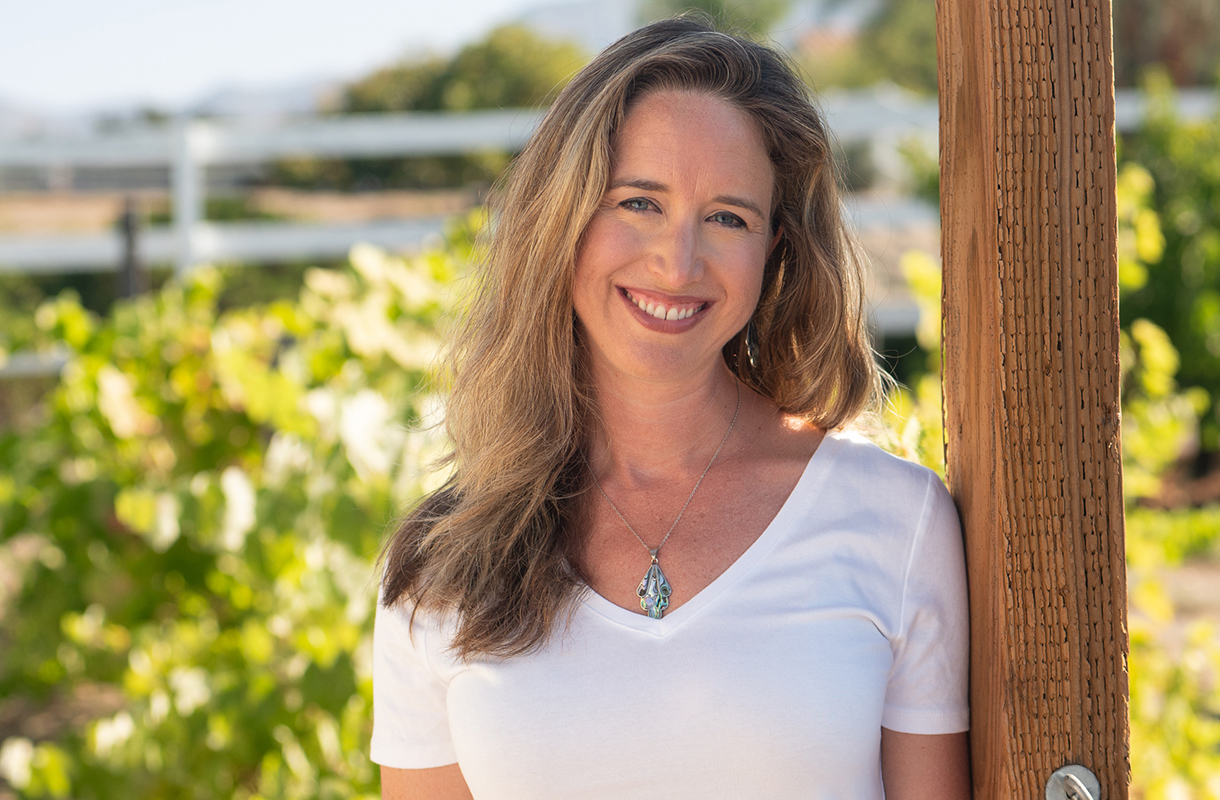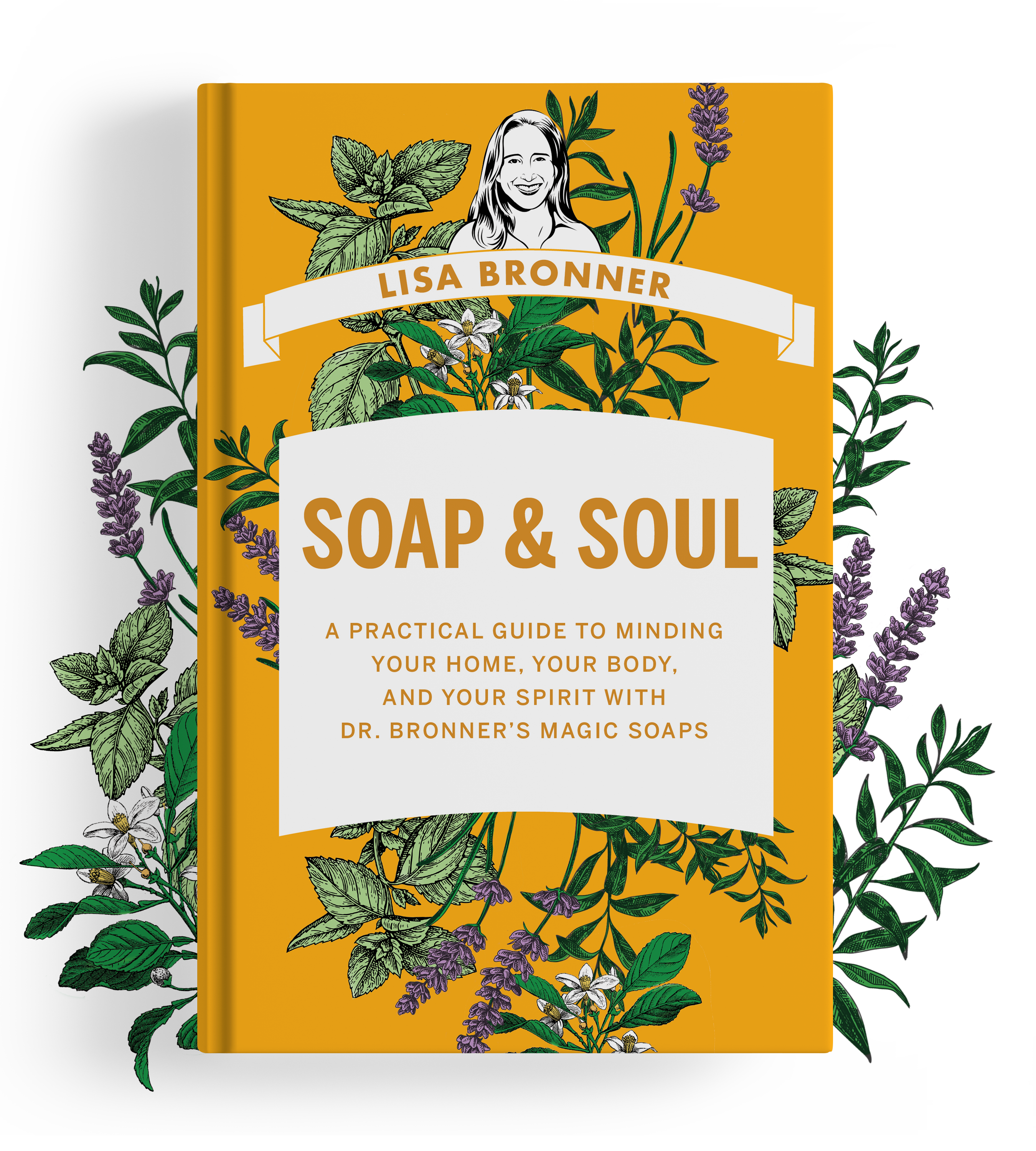
Cleaning just got a whole lot clearer.
On food, we are accustomed to seeing ingredient information. Turn that package over to see added sugars, added colors, allergens, weird chemicals (TBHQ, I’m looking at you). They’re fairly clearly listed. (We still have the dubious “natural flavor” which I decode as, “not natural because if it were, why wouldn’t they say what it is.”) But for the most part, we can know what we are eating.
Not so with cleaning products. It has been up to manufacturers to disclose ingredients, if they chose to. Most didn’t. You might even see cheap shot, pseudo-ingredient lists such as: Surfactant, Enzyme, Preservative – which tell us absolutely nothing. Until now.
In 2017 California passed a bill that marks huge progress for consumer awareness. The California Cleaning Product Right to Know Act mandates a whole lot of new information be made available to consumers. So why am I just now writing about a law that was passed over two years ago? Because as of January 1, 2020 it began to go into effect. These new rules apply to household and institutional (janitorial) cleaning products.
Key Provisions of the Law
1. Ingredient Disclosure Timetable
- Website Disclosure by January 1, 2020
- Product Label Disclosure by January 1, 2021
2. Product Label Disclosure Requirements
- All intentionally added ingredients
- All Fragrance ingredients present at or above 100 ppm.
- All Fragrance ingredients, present at any concentration, identified as Chemicals of Concern on two key lists: California’s Department of Toxic Substances Control’s (DTSC) Candidate Chemical list or the EU list of fragrance allergens. The DTSC List is actually a compilation of 22 lists from various authoritative bodies that have identified chemicals linked to cancer, reproductive issues, asthma/respiratory problems, and endocrine disruption.
3. Website Disclosure Requirements
Everything that’s on-package, plus:
- The ingredient’s purpose
- The ingredient’s Chemical Abstracts Service Number (CAS)
- A link to the safety data sheet (SDS) for each product
- Consumer-friendly language (I love that this was specified.)
- The presence of 34 of the most common toxic Contaminants at or above 100 ppm, except for 1,4 Dioxane, a probable human carcinogen, which must be disclosed at or above 10 ppm.

Although product label disclosure begins January 1, 2021, we still won’t immediately see full ingredient lists on store shelves. The law permits manufacturers and retailers to sell out their on-hand inventory. So, any product MADE after January 1, 2021 will have to comply with on-package labeling.
Looking ahead, ingredient disclosure must comply with any future updates to the DTSC’s and EU’s lists. This means that when ingredients are added to the lists of human health hazards, whether because the ingredient is novel or because research reveals a hazard to a known ingredient, manufacturers must disclose accordingly.
A few exceptions to disclosure:
- Disinfectants disclosure is online only – Disclosure for ingredients in disinfectants is online only. Disinfectants are regulated as pesticides, which means they fall under the federal jurisdiction of the Environmental Protection Agency (EPA). Under their policies, each on-label change must be reviewed by every state, as well as the federal EPA, a lengthy and burdensome process. A compromise was reached to require disclosure only online.
- Trade Secret protection for Non-hazardous ingredients – There is still a small window for withholding information based on “trade secret” status, officially called Confidential Business Information (CBI). Companies can only claim CBI status for an ingredient if the ingredient is not hazardous (per the aforementioned lists) and indeed is registered as CBI, which entails a multi-step state process, and can produce proof of the CBI status if audited by the state attorney general.
- Prop 65 Labeling effective January 1, 2023 – Disclosure of ingredients on the Prop 65 list will not occur until January 1, 2023. This five-year grace period allows manufacturers to reformulate away from these ingredients.
- Trial sizes online only – Package must give direction to website for ingredient lists.
I was equally excited to see required transparency for fragrances and contaminants. These were two areas that can harbor great hazards, and in which consumers had no information. Studies are finding increasing links among common fragrance ingredients to hormone disruption, allergy creation, respiratory triggers, and reproductive problems. No longer can hazardous chemicals hide under the cloak of Confidential Business Information (CBI, aka “trade secrets”). If it’s hazardous per those two lists, it must be disclosed, fragrance and colorants included.
When it comes to contaminants, manufacturers have argued that if they didn’t add an ingredient on purpose, they shouldn’t be responsible for its presence. However, there are several common ingredients and manufacturing processes that can produce super nasty byproducts.
This law does not make manufacturers change what is in their products. It makes them SAY what is in their products. It pretty much is up to consumers to take the next step to demand change for ingredients of concern.
This still leaves the ball very much in the consumer’s court. There’s some legwork involved. For one thing, for 2020 consumers must access manufacturers’ websites to see ingredient lists. Then they must learn the relative safety of the ingredients. Resources such as the Environmental Working Group’s Guide to Healthy Cleaning can help decode.
With this law, cleaning product disclosure just leap-frogged cosmetic disclosure. With these tremendous advancements in fragrance and contaminant disclosure, we are in the very strange circumstance of knowing more about what we put on our houses than what we put on our bodies. While this law only applies in one state, California will likely pave the way for such change across the country. Also, organizations such as the Breast Cancer Prevention Program are advocating for consumers’ safety in personal care products.
This does not change in the slightest what Dr. Bronner’s does, where all ingredients have always been listed on the bottles. However, we are very glad to see these strides forward for the safety and awareness of all consumers.
As much as it would be nice if manufacturers made the safety decisions for us, we can’t trust that their priorities are ours. Our advocacy, our awareness and publicizing of any concerns is what holds them accountable. At least now we have the needed information to know where we stand.
Huge thanks to Janet Nudelman, Director of Program and Policy at the Breast Cancer Prevention Program, one of the bill’s sponsors, and Director of the Campaign for Safe Cosmetics. Not only did Janet help with negotiations, she came to my rescue after I had read the law, read a summary of the law, and still needed someone to explain the details. Check out these two organizations for their excellent work towards consumer safety and awareness.








We are using a gallon jug of 18 in 1 Hemp Eucalyptus Pure Castile Soap
Can you please send me a current copy of the SDS for this product
I have a big safety inspection coming up and I need this info
Thanks
Hi Robert- Please check your email for the SDS.
This is great information. I have begun the conversation about better air at my place of employment. They initiated a tobacco-free workplace for everyone’s improved air quality, so I am piggy backing on that initiative. My work is with group homes serving the mentally ill.
I love your company!!!
That’s great to hear, MC!
Ya’ll have a sodium lauryl sulfate in Sal Suds, in your product….is it dangerous, tho from coconut oil I thot I read in your product??? Pls let me know….becuz I do not want to spend $16 for poison!! I am angry if it is toxic!! I thot I was doing my body good!!??!!??
Hi Robin- Sal Suds is formulated with SLS because of its keen ability to cut through grease and grime and to generate suds. Studies have consistently shown that SLS is safe to use in low concentrations and in products that are meant to be rinsed off – both of which are true of Sal Suds. SLS can be a skin irritant for some people because it can be so drying. It is so good at picking up oils that it pulls them right out of our skin. You won’t find SLS in any of our personal care products, and personal care products (shampoos, soaps, toothpaste and such) that include it should be avoided. If you have concerns about Sal Suds, our all-natural Castile soap does an excellent job of household cleaning as well. For a deeper dive into SLS, refer to my blog post here: https://www.lisabronner.com/there-is-no-cancer-risk-from-sls-sodium-lauryl-sulfate/
Great article, informative and in-depth, thanks!
With Dr. Bronner, vinegar, borax, baking soda and water you can clean just about anything! It amazes me that we’ve become so dependent on unfamiliar (and often dangerous) chemicals to do the work that grandma did with the everyday stuff under her sink!
Thanks so much for detailed and easy to understand post Lisa! It’s so helpful as always 🙂
You are very welcome, Grace! I’m glad this is helpful!
Good news! And thank you for your clear explanation. Let’s hope other states follow suit.
Hi Jane- That’s my hope too!